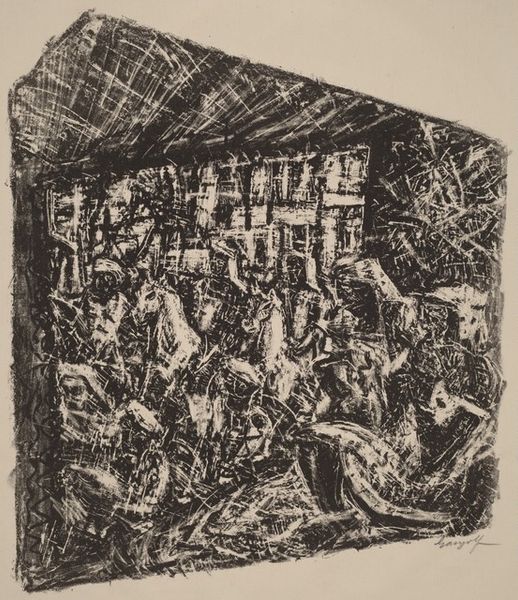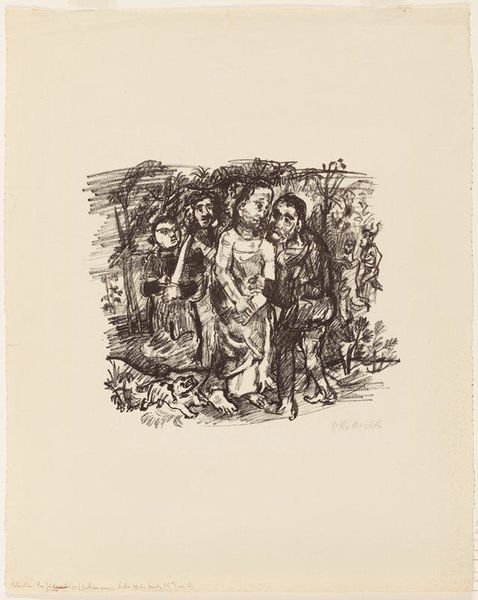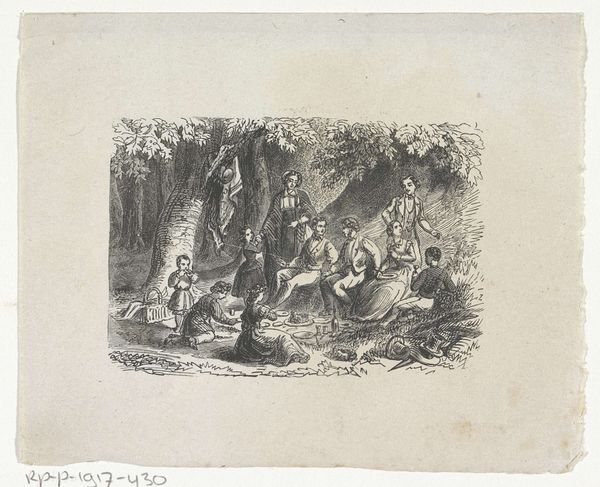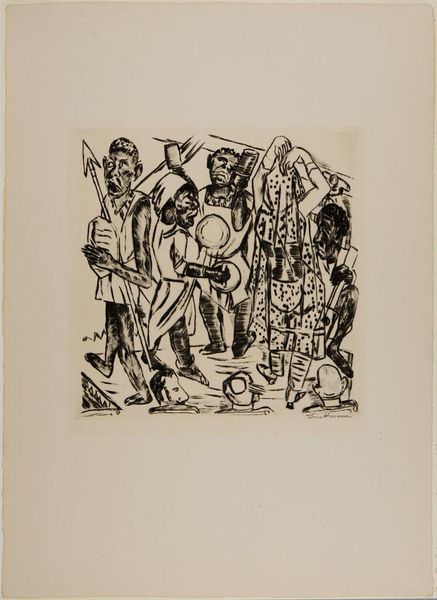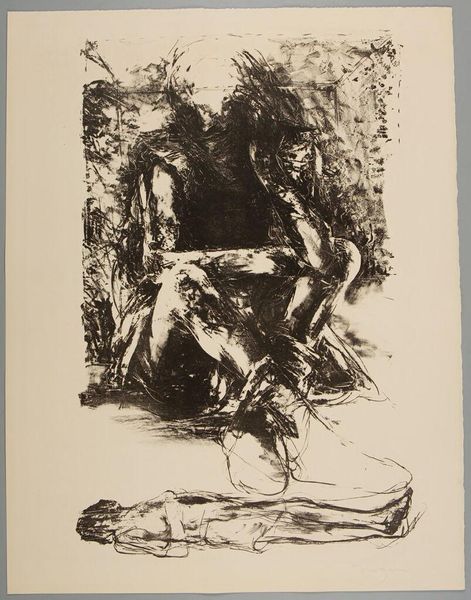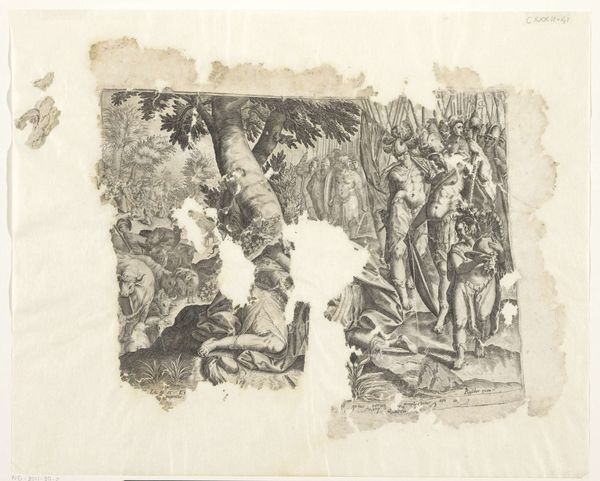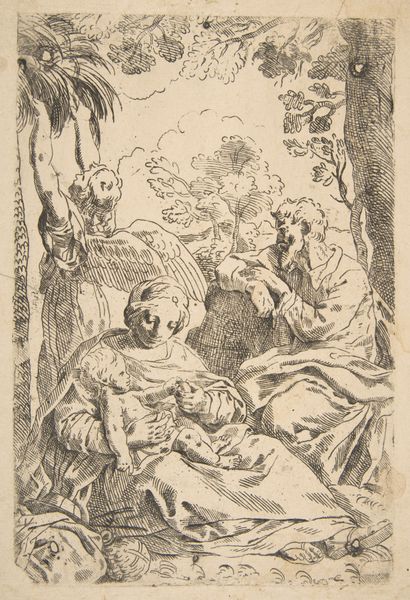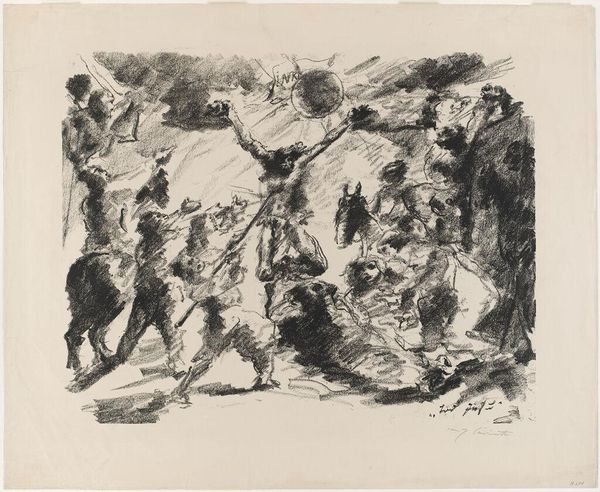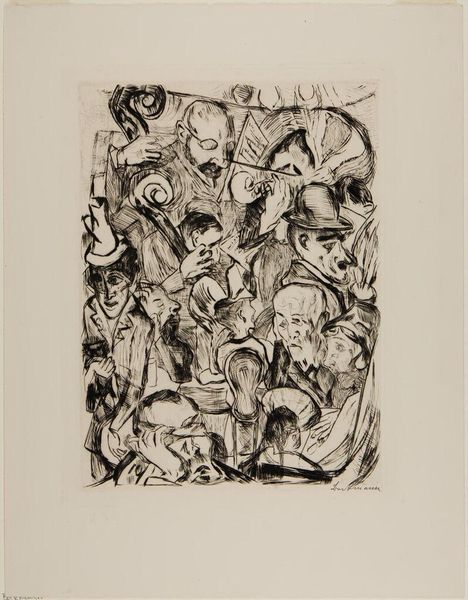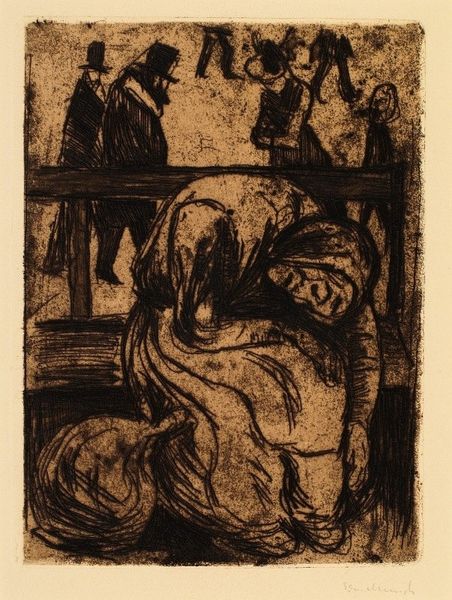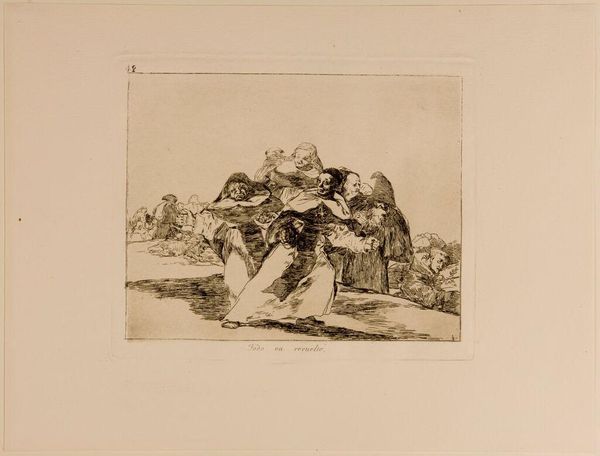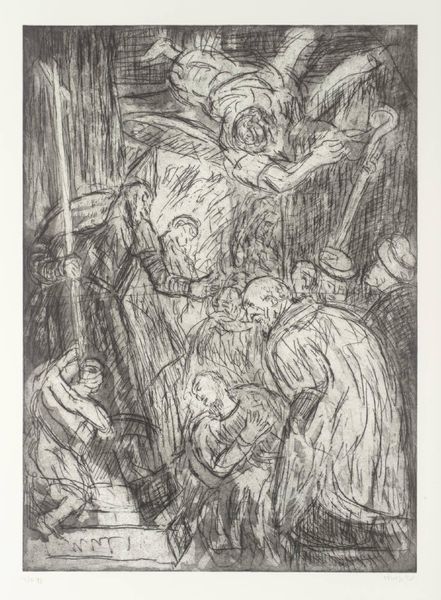
The Prisoners Bathing, illustration for Dostoyevsky's "The Convicts' Bath," in "Kunst und Künstler" (1913); verso: Issai Fomitsch with Full Voice Singing 1912
0:00
0:00
Dimensions: sheet: 31.2 Ã 24.2 cm (12 5/16 Ã 9 1/2 in.) image on recto: 21.6 Ã 18.1 cm (8 1/2 Ã 7 1/8 in.) image on verso: 15.5 Ã 13.7 cm (6 1/8 Ã 5 3/8 in.)
Copyright: CC0 1.0
Editor: This is Max Beckmann's "The Prisoners Bathing," an illustration from 1913. The density of the figures creates a really claustrophobic feeling. What can you tell me about the historical context of this piece? Curator: Consider the role of art publications like "Kunst und Künstler." They weren't just showcasing art; they were actively shaping public perception and discourse. How might an image like this, appearing in such a journal, contribute to discussions about social issues and the role of the individual in society? Editor: It seems like it could be a pretty pointed social critique, especially given the subject matter. It's not just about art; it’s about making a statement. Curator: Exactly. Beckmann wasn't simply illustrating a scene; he was engaging with the political and social realities of his time, using art as a platform for commentary. Understanding this helps us to unpack the layers of meaning embedded within the image. Editor: That makes me think about what art can do, it can influence and critique and be a statement all at once. Curator: Precisely! This image reminds us that art is not created in a vacuum.
Comments
No comments
Be the first to comment and join the conversation on the ultimate creative platform.
